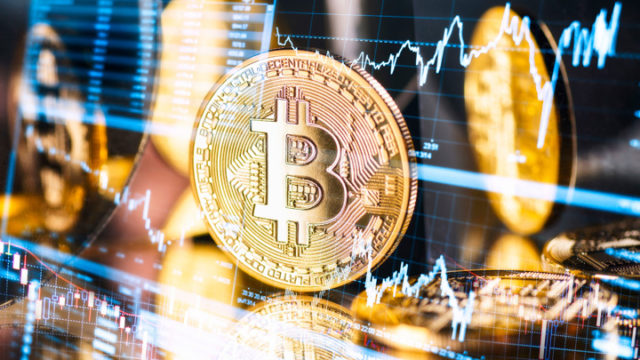- The Mexican peso recovers after dovish comments from Fed Chairman Jerome Powell.
- Powell highlights progress on US inflation, suggests balanced risks.
- Banxico Governor Rodriguez Ceja suggests possible future rate cuts as disinflation persists.
- Banxico survey adjusts GDP and policy outlook downwards, forecasts 2024 USD/MXN rate at 18.73 from 17.80.
The Mexican Peso advanced against most currencies on Tuesday, particularly against the US Dollar, after Federal Reserve (Fed) Chairman Jerome Powell made comments perceived as dovish by market participants. This punished the Dollar, which lost around 0.40% while the USD/MXN is trading at 18.27 below its opening price.
Powell said the U.S. economy has made significant progress on inflation, adding that the risks from the Fed’s dual mandate are more balanced. His comments came ahead of the release of the May JOLTs report, which beat expectations.
Aside from this, the Mexican currency gained some traction despite the fact that the governor of the Bank of Mexico, Victoria Rodríguez Ceja, adopted a dovish stance, adding that the progress of disinflation may “allow us to continue discussing downward adjustments in our rate, and I believe that this is what we will be doing in our next monetary policy meetings.”
Mexico’s economic agenda featured Gross Fixed Investment for April, which showed mixed readings between monthly and annual figures.
Meanwhile, Banxico’s latest economic expectations survey showed that most private analysts have revised downwards the Gross Domestic Product (GDP) and their monetary policy expectations. As for the USD/MXN exchange rate for 2024, economists raised their forecasts from 17.80 to 18.73.
Daily Digest of Market Drivers: Mexican Peso Rises Despite Expected Economic Slowdown
- The Banxico survey showed that economists estimate that the Gross Domestic Product (GDP) will end at 2%, up from 2.1%. They expect Banxico to cut rates from 11.00% to 10.25%, compared to the 10.00% projected in May.
- Mexico’s Gross Fixed Investment rose in April from 0.8% to 0.9% on a monthly basis, but missed estimates of 1.2%. On an annual basis, investment grew by 18.1%, crushing March’s 3% and beating forecasts for a 17.1% increase.
- U.S. job openings rose in May to 8.14 million from 7.919 million, beating the consensus projection of 7.91 million, the U.S. Bureau of Labor Statistics (BLS) reported.
- U.S. business activity in the manufacturing sector was mixed, according to S&P Global Manufacturing and the Institute for Supply Management (ISM). Traders are keeping an eye on Wednesday’s service sector release.
- The CME’s FedWatch tool shows the odds of a 25-basis-point Fed rate cut in September at 63%, up from 58% on Monday.
Technical Analysis: Mexican Peso Gains Traction as USD/MXN Dips Below 18.30
The USD/MXN failed to decisively break the June 28 high of 18.59, prompting market participants to sell the pair, which fell below 18.30. Momentum remains in favor of buyers, but points lower, suggesting that in the near term, sellers are in control.
If USD/MXN falls further, the next target would be the psychological figure of 18.00. Once surpassed, the next support level would be the December 5 high turned support at 17.56 before falling towards the 50-day simple moving average (SMA) at 17.37.
On the other hand, if buyers push the spot price above 18.50, that will exacerbate a rally towards the June 28 high of 18.59 if they wish to extend their gains and challenge the year-to-date high of 18.99.
Banxico
The Bank of Mexico, also known as Banxico, is the country’s central bank. Its mission is to preserve the value of Mexico’s currency, the Mexican Peso (MXN), and to set monetary policy. To do so, its primary goal is to maintain low and stable inflation within target levels (at or near its 3% target, the midpoint of a tolerance band of between 2% and 4%).
Banxico’s main tool for guiding monetary policy is setting interest rates. When inflation is above the target, the bank will try to control it by raising rates, making it more expensive for households and businesses to borrow money and thus cooling the economy. Higher interest rates are generally positive for the Mexican Peso (MXN), as they generate higher returns, making the country a more attractive place for investors. Conversely, lower interest rates tend to weaken the MXN. The rate differential with the Dollar, or how Banxico is expected to set interest rates compared to the US Federal Reserve (Fed), is a key factor.
Banxico meets eight times a year and its monetary policy is heavily influenced by decisions of the US Federal Reserve (Fed). Therefore, the central bank’s decision-making committee usually meets a week after the Federal Reserve. By doing so, Banxico reacts to and sometimes anticipates the monetary policy measures set by the Federal Reserve. For example, after the Covid-19 pandemic, before the Fed raised rates, Banxico did so first in an attempt to decrease the chances of a substantial depreciation of the Mexican Peso (MXN) and avoid capital outflows that could destabilize the country.
Source: Fx Street
I am Joshua Winder, a senior-level journalist and editor at World Stock Market. I specialize in covering news related to the stock market and economic trends. With more than 8 years of experience in this field, I have become an expert in financial reporting.








